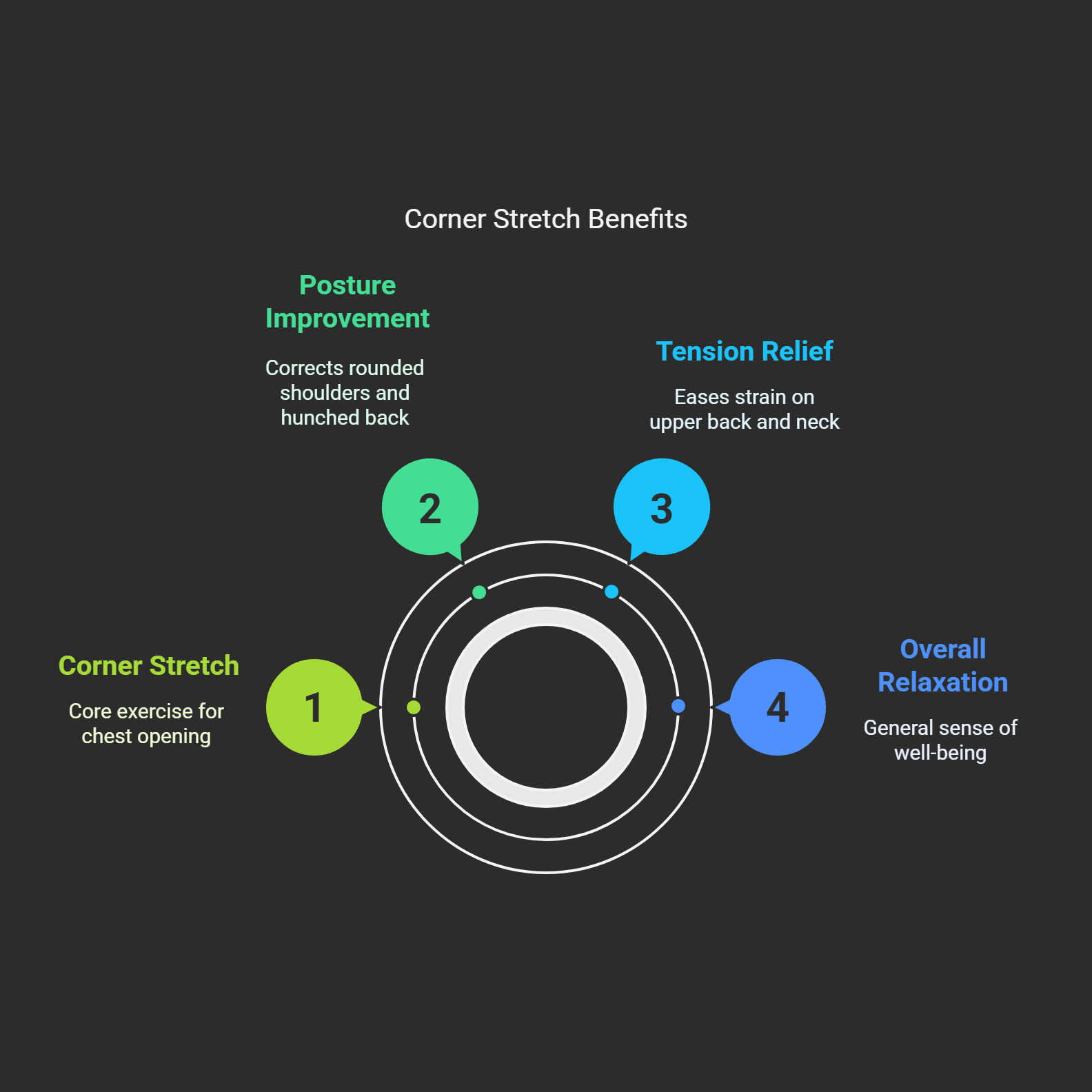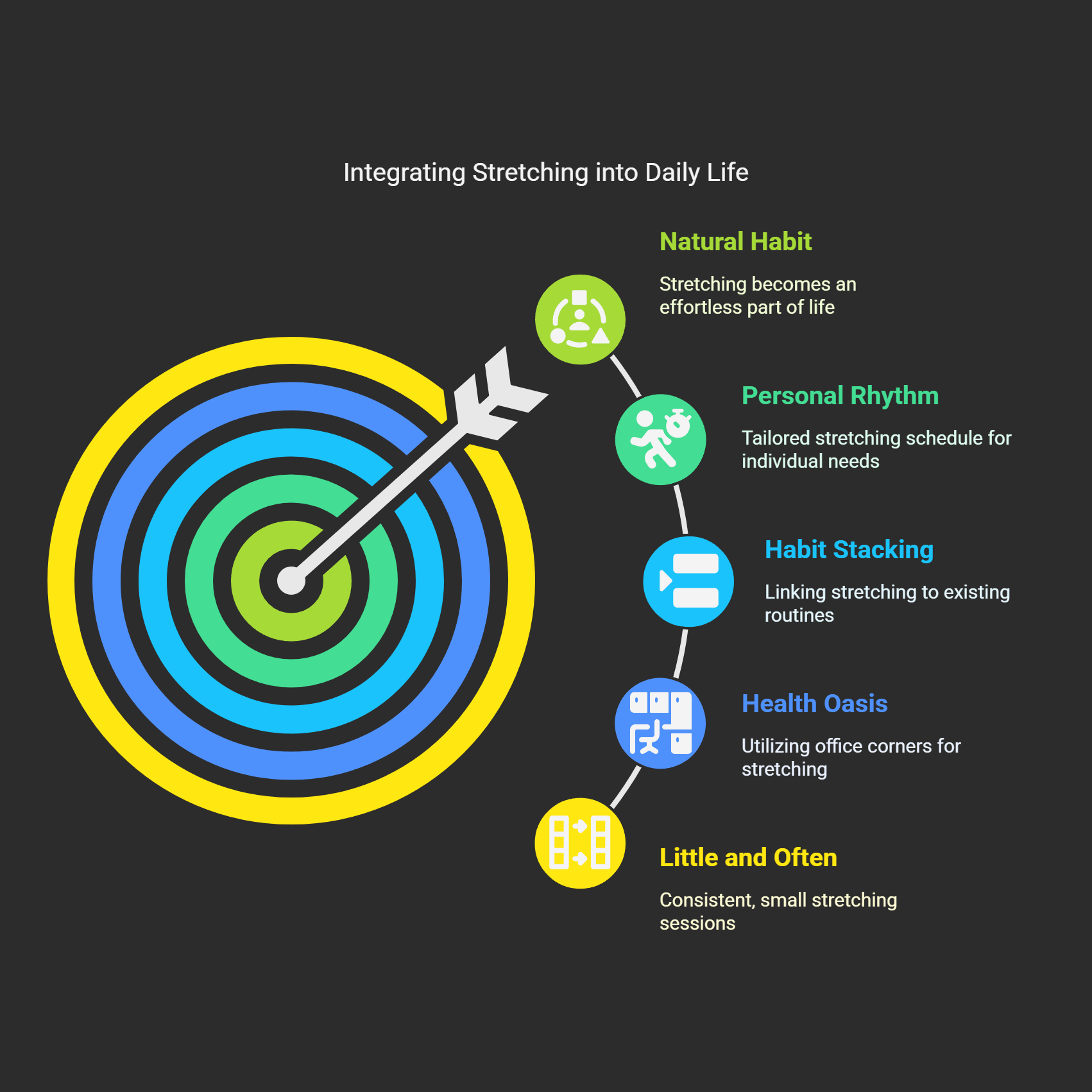Hello everyone, I'm your massage therapist. In my clinical practice, I encounter clients nearly every day who seek help for stiff necks, rigid shoulders, and upper back pain. They often describe the problem of "screen slouch"—a posture that develops from long hours spent looking down at smartphones or hunched over a computer, causing the body to unconsciously slump forward.Many people look for ways to find relief, yet they often overlook one of the true root causes of the problem: the pectoralis major muscle group, hidden on the front of the body, silently pulling our posture forward. These "pecs" aren't just a symbol of bodybuilders; they are a key player influencing our posture and overall comfort. When they become tight and short due to chronic poor posture, they become the invisible force that triggers a chain reaction of discomfort, trapping us in a vicious cycle.
This chronic tightness in the chest muscles is the core factor that leads to "Upper Crossed Syndrome." The term may sound technical, but it describes a state of muscle imbalance that can happen to any of us.Simply put, our chest muscles, along with the muscles of our upper back and the back of our neck, become overly tight. Meanwhile, our deep neck flexors and the muscles of our mid and lower back become relatively weak. This "strong in the front, weak in the back" imbalance is like a tug-of-war where the tight chest muscles have gained the upper hand, continuously pulling the shoulders inwards and forwards to form typical rounded shoulders.To see clearly while in this rounded-shoulder state, our head then unconsciously juts forward, developing into what is often called "forward head posture" or "tech neck." This entire chain reaction is the fundamental reason for many people's chronic neck and shoulder discomfort, and even headaches.
There are many stretches out there, but the one I most often recommend to my clients is the simple yet extremely effective "corner stretch." The unique aspect of this movement is that it cleverly utilizes the stable support of a wall corner, allowing us to safely open up the chest while simultaneously stretching both pectoralis major muscles.From a therapist's perspective, its benefits go far beyond temporary relaxation. The most direct benefit is posture improvement. By counteracting the forward pull of the chest muscles, it helps the shoulders return to a neutral position, effectively alleviating rounded shoulders and a hunched back. When the tension on the front side is released, the burden on the upper back and neck muscles—which become sore from being chronically overstretched—is naturally lightened. This is precisely why treating back pain sometimes needs to begin with relaxing the front of the chest.

Beyond improving posture and reducing pain, the corner stretch can also bring deeper benefits. It helps to increase our shoulder joint's range of motion, making daily actions like raising an arm or turning the body more fluid.What's even better is that it can significantly improve our respiratory function. When a tight rib cage is opened up, the expansion of the ribs is no longer restricted, and breathing naturally becomes deeper and more efficient. After consistent practice, many clients have told me with pleasant surprise that they feel like they "can finally take a proper deep breath."This feeling of physical and mental ease can even influence one's psychological state. When we stand tall and open our chest, we feel more confident and vibrant. This is a beautiful embodiment of the mind-body connection and a step towards a "Happy, Healthy Life."
To master this movement, precise execution is key.First, stand facing a corner, with your feet in a staggered lunge stance to maintain stability. Next, raise both arms and place your forearms and palms flat against the wall surfaces on either side. Your elbows should be bent at a 90-degree angle and positioned at roughly the same height as your shoulders. Keep your core muscles (abdominals) slightly engaged to prevent excessively arching your lower back.Once you are ready, slowly lean your entire body forward from the ankles, imagining you are a straight plank of wood. Use your body weight to gently push your chest forward. Remember, the key to this movement is to shift your whole body forward rather than just bending at the waist. This ensures the stretching force is accurately applied to the pectoralis major muscles.

When performing the stretch, be sure to coordinate it with deep and even breathing. You can inhale as you prepare, and then exhale as you slowly lean forward to deepen the stretch. Do not hold your breath at any point, as smooth breathing helps your muscles to relax more effectively.Hold the stretched position for about 15 to 30 seconds. You should feel a comfortable pulling sensation in your chest, but it should never be a sharp, stabbing pain. When the time is up, slowly return to the starting position.It is recommended to repeat this 3 to 5 times per session, for 1 to 3 sessions per day. This simple exercise will be your capable assistant in reshaping your posture and saying goodbye to soreness; the key is to be gentle and consistent.
To ensure the stretch is both effective and safe, we must avoid several common mistakes.The first is "arching the lower back," which transfers stress to your lumbar spine. Remember to gently engage your abdomen during the process to keep your lower back stable.The second is "shrugging your shoulders," which will make your already-tense upper trapezius muscles even tighter. Consciously keep your shoulders down and away from your ears.Additionally, ensure your elbows remain firmly against the wall throughout the movement. If your elbows lift off the wall, the effectiveness of the stretch will be greatly diminished.Finally, and most importantly, listen to your body and never push through pain. The goal of a stretch is a comfortable pulling sensation, not painful torture.
After you've mastered the basic movement, you can begin to try some variations to more comprehensively relax your chest muscle group. Our pectoralis major is shaped like a fan, and by adjusting the height of your arms, you can stretch its different fibers.For example, placing your elbows slightly higher than your shoulders will place more emphasis on stretching the lower fibers of the pectoralis major and the deeper pectoralis minor muscle. Conversely, placing your elbows slightly lower than your shoulders will more effectively stretch the upper fibers of the pectoralis major.Additionally, if you don't have a corner, you can also use a doorway or a single flat wall to perform a "single-arm stretch." This method allows for a more focused and deeper relaxation of one side of the chest at a time, giving you a different sensation.
After learning the correct movement, the more crucial step is to integrate it into your daily life. For maintaining health, the principle of "a little and often" is far more effective than "a lot, once in a while."You can try the "habit stacking" method by linking the corner stretch to an existing routine. For example, do a set of stretches every time you make coffee, or each time you get up from your desk for an hourly break. For office workers, the corner of your office is your very own "health oasis."Set an alarm to remind yourself. A brief few minutes can not only soothe your muscles but also boost your spirits and improve your afternoon work efficiency. Find a rhythm that works for you, and let stretching become a natural habit.

Please remember, we should view stretching as a proactive health management strategy, not a remedial measure to be thought of only after pain appears. Prevention is far better than cure. By maintaining good muscle balance and posture through regular stretching, you can fundamentally prevent the various nagging discomforts caused by tight chest muscles.This represents a mindset shift from "passive repair" to "proactive maintenance," and it is the cornerstone of achieving long-term physical and mental well-being. You are the most important captain of your own health; that power and initiative are in your own hands.
In summary, from understanding the causes of "screen slouch" to learning how to use the simple yet powerful tool of the "corner stretch," we have walked a journey towards better health together. This movement not only improves your external posture but can also reduce neck and shoulder pain, enhance the quality of your breathing, and bring profound positive changes to your life.I encourage you to start integrating this practice into your life, beginning today. Even a single, conscious stretch is a great step towards a more upright, more comfortable, and more vibrant version of yourself.Please be patient with yourself and enjoy the process. And remember, if your pain persists or the problem is severe, be sure to seek the help of a professional healthcare provider.May your breath be deeper, your posture more upright, and your life more comfortable and at ease!
